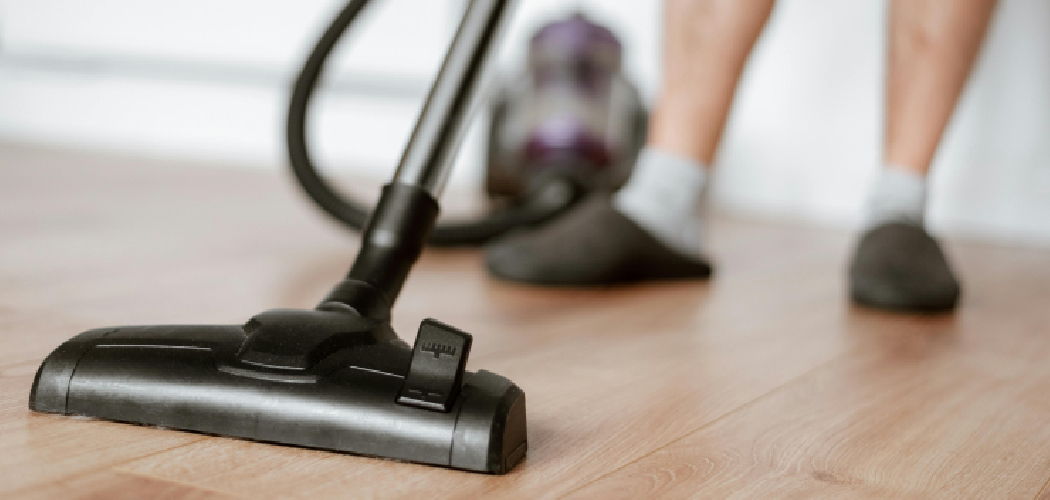When faced with a toilet overflow, the aftermath can be both alarming and messy. It’s essential to address the situation promptly to prevent water damage and maintain hygiene.
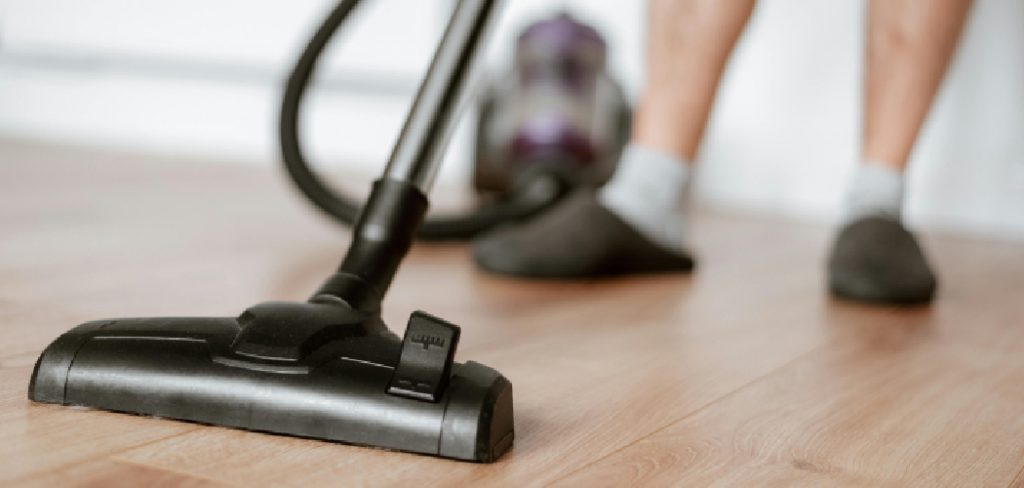
This guide will provide a step-by-step approach to effectively clean the affected floor area, ensuring a thorough removal of waste and contamination.
By following these instructions on how to clean floor after toilet overflows, you can restore your bathroom to a safe and sanitary condition, reducing any potential health risks associated with standing water and sewage.
Why is It Important to Clean the Floor After a Toilet Overflow?
A toilet overflow can occur due to various reasons, such as clogging, faulty plumbing, or excessive flushing. Regardless of the cause, cleaning up the affected area is crucial as standing water and sewage can pose health hazards, including:
- Spread of bacteria and germs that can cause illnesses
- Contamination of the surroundings with fecal matter and other waste products
- Development of mold and mildew, leading to potential respiratory issues
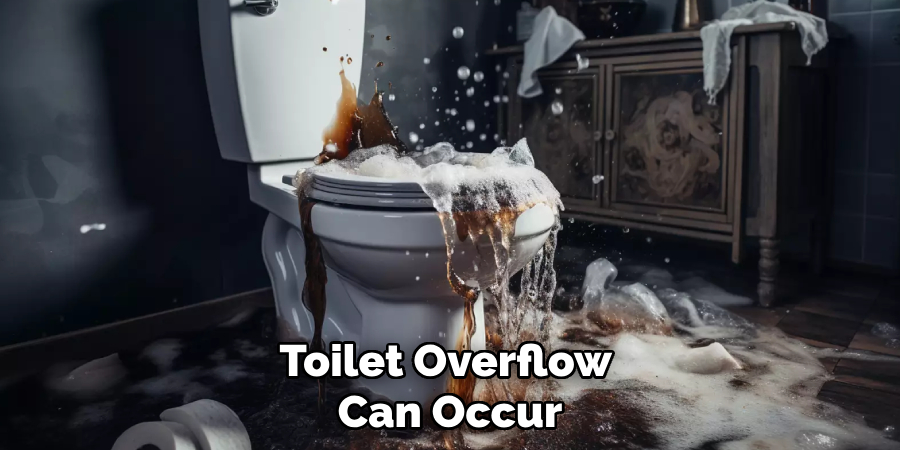
Moreover, neglecting to clean up after a toilet overflow can result in further damage to the bathroom floor, walls, and even the ceiling below. This could lead to costly repairs or replacements, making it essential to address the issue promptly.
Needed Materials
Before starting the cleaning process, gather the following materials:
Rubber Gloves
Wear rubber gloves to protect your hands from coming into direct contact with any waste or contaminated water.
Mop and Bucket
A mop and bucket will be needed to collect the standing water and disinfect the floor.
Bleach or Disinfectant Cleaner
Choose a bleach-based cleaner or a disinfectant specifically designed for cleaning up after biohazardous spills. These cleaners are effective in killing germs and bacteria preventing the spread of diseases.
Scrub Brush
A scrub brush will be useful in removing any stains or residue left behind by the overflow. It is recommended to use a separate brush solely for this purpose to avoid cross-contamination.
Towels or Rags
Keep a pile of towels or rags nearby to soak up any excess water and dry the floor.
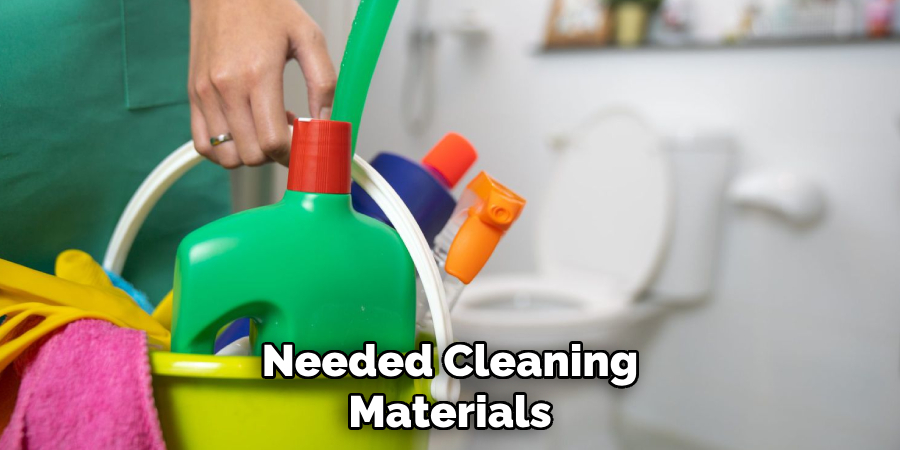
8 Steps on How to Clean Floor After Toilet Overflows
Step 1: Safety First
Before beginning the cleaning process, prioritize safety to protect yourself from potential hazards. Start by turning off the water supply to the toilet to prevent any further overflow. Ensure that the area is well-ventilated by opening windows or using fans to dissipate any unpleasant odors. Put on your rubber gloves to create a barrier between your skin and any contaminants.
If there are any electrical devices near the affected area, turn off the power to prevent electrical hazards. Taking these precautions will help create a safer environment for the cleaning process.
Step 2: Remove Standing Water
Once you have ensured your safety, the next step is to remove any standing water from the affected area. Using the mop and bucket, begin by soaking up the excess water. Start at the edges of the area and work your way towards the center, making sure to collect as much water as possible.
If the water is particularly deep, consider using towels or rags to soak it up before mopping. As you fill the bucket, be sure to empty it frequently to prevent any overflow.
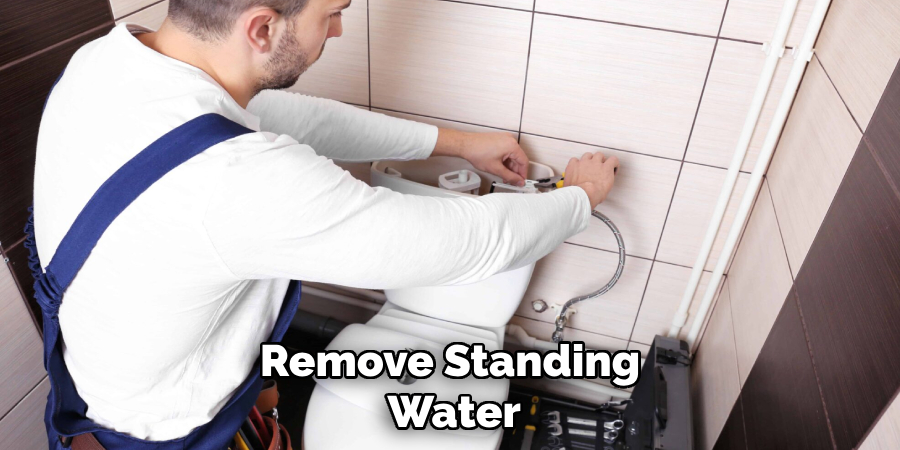
Dispose of the water responsibly, ideally in a toilet or outside, away from drains and gardens, to avoid contamination. Once the majority of standing water has been removed, proceed to wring out the mop and do a final pass over the area to ensure maximum moisture removal.
Step 3: Disinfect the Area
Using a bleach-based cleaner or disinfectant, spray or pour the solution over the affected area. Follow the instructions on the label and let it sit for several minutes to allow time for the cleaner to do its job. This will ensure that any remaining bacteria and germs are killed off.
Afterward, use a scrub brush to thoroughly clean all surfaces of the floor and along edges and corners. Once complete, rinse away any residue with clean water and dry with towels or rags.
Step 4: Address Any Stains or Residue
After disinfecting the area, inspect the floor for any remaining stains or residue that may have been left behind by the overflow. Use your scrub brush and a suitable stain remover or additional disinfectant to tackle these spots. Apply the cleaner directly to the stain and allow it to sit for a few minutes to break down the material. Then, scrub the area in a circular motion to lift the stain from the surface.
Continue this process until the stains are completely removed and the floor appears clean. For stubborn stains, you may need to repeat the application and scrubbing until satisfactory results are achieved. Once finished, rinse the area again with clean water and dry thoroughly with towels or rags to prevent any slip hazards.
Step 5: Clean and Disinfect the Toilet
As a precautionary measure, it is also essential to clean and disinfect the toilet after an overflow. Use a separate sponge or cloth and your chosen cleaner to thoroughly clean the inside of the bowl, rim, and seat. Flush several times to ensure all remnants are removed, then disinfect with a spray or wipe down using bleach-based products.
Step 6: Check for Any Further Damage
After addressing the immediate issue and cleaning up, take some time to assess any potential damage that may have occurred due to the overflow. Check for any leaks or structural damage to the floor or surrounding areas. If you notice any significant damage, it is best to seek professional help for repairs.
You should also check for any signs of mold or mildew. If you notice a musty odor or see visible growth, it is essential to address this issue promptly as mold can be hazardous to your health. Consider using specialized cleaning products or seek professional help if the infestation is severe.
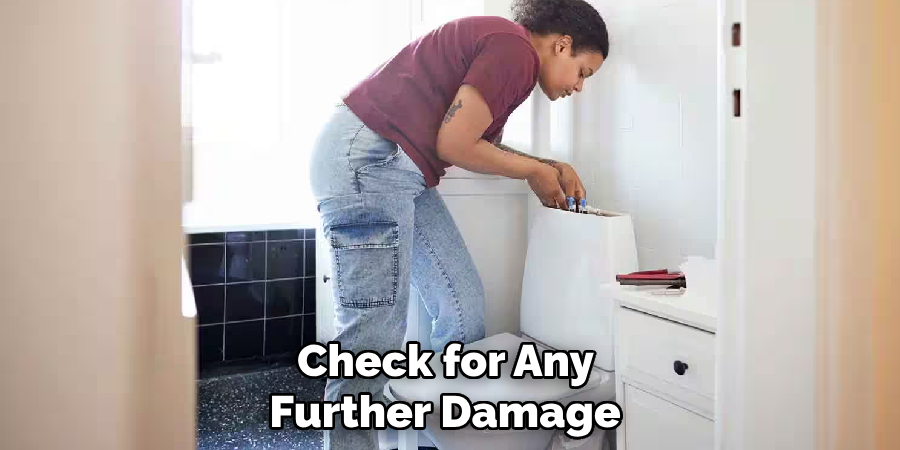
Step 7: Dispose of Materials Properly
When finished with all cleaning and repairs, dispose of all materials used during the process properly. This includes towels, rags, gloves, and any contaminated items. Use separate trash bags to prevent cross-contamination and dispose of them in designated biohazard waste bins, if available.
It is crucial to follow proper disposal procedures to prevent the spread of any potential pathogens and protect others from harm.
Step 8: Take Preventative Measures
To avoid future toilet overflows and similar incidents, take some preventative measures such as regularly checking and maintaining your toilet’s mechanisms, avoiding flushing inappropriate materials, and being mindful of water levels. If you have experienced a significant overflow or consistently face this issue, consider seeking professional help for further inspection or repairs.
By following these steps on how to clean floor after toilet overflows, you can effectively clean up after a toilet overflow and ensure a safe and hygienic environment in your home. Remember to prioritize safety at all times and seek professional help when needed. Keep these tips in mind so that you can quickly and efficiently handle this unexpected situation.
Additional Tips
- Always have a plunger on hand in case of a clogged toilet to prevent overflow.
- Use a drain snake or auger to clear any stubborn clogs deeper in the pipes.
- Regularly inspect and replace damaged or worn toilet parts to prevent future overflows.
- Consider installing an overflow alarm to alert you of potential issues before they escalate.
- Keep a stock of clean towels, rags, and disinfectants specifically for bathroom emergencies.
- If unsure about how to handle a particularly large or hazardous overflow, seek professional help immediately for your safety.
Frequently Asked Questions
Q: How Often Should I Inspect My Toilet for Potential Overflows?
A: It is recommended to check your toilet at least once a month, or more frequently if you notice any issues such as slow drainage or water levels. It is also advisable to have a professional plumber inspect your toilet at least every two years.
Q: Can I Use Natural Cleaners Instead of Bleach-Based Products?
A: While natural cleaners can be effective in some cases, it is recommended to use bleach-based products for disinfecting after a toilet overflow. These products are specifically designed to kill bacteria and germs that may be present in the contaminated water. Consult with a professional or do thorough research before using any alternative cleaning methods.
Q: How Do I Know When to Seek Professional Help for a Toilet Overflow?
A: If the overflow is significant, or if you are unsure of how to handle the situation safely, it is best to seek professional help immediately. Additionally, if there are signs of structural damage or mold growth, it is essential to have these issues addressed by a professional to ensure your home’s safety.
Conclusion
In conclusion, addressing a toilet overflow promptly and effectively is crucial for maintaining a safe and hygienic home environment. By following the outlined steps on how to clean floor after toilet overflows—such as thorough cleaning, stain removal, and assessing for potential damage—you can mitigate the risks associated with water damage and contamination. Additionally, implementing preventative measures can significantly reduce the likelihood of future overflows.
Remember, prioritizing safety and seeking professional assistance when needed will help you navigate these unexpected situations with greater ease and confidence. Your proactive approach can lead to a healthier living space for you and your loved ones.

